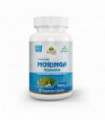Shilajit is considered to be of a vegetative origin, oozing from mountain cracks in the Himalayan rocks, mostly during the summer. This thick, sticky tar-like substance was first mentioned in ancient Sanskrit texts over 3,000 years ago when it was known as 'conqueror of mountains and destroyer of weakness'. It has since been one of the staples of traditional folklore in a variety of Asian healing systems. Shilajit contains fulvic acid and over 84 minerals and offers numerous health supporting benefits.
Shilajit is an astonishing sticky tar-like resinous substance that is neither completely plant nor of animal origin. In nature, Shilajit is a type of mineral pitch that is made up of humus and decomposed plant remains, exuded from the rocks present in the Himalayas at an altitude of 1000 to 5000 metres above sea level. Shilajit is usually known as Asphaltum, Black Bitumen, or Mineral Pitch in English. Other names that refer Shilajit in Ayurveda in other states within India includes Silajat, Shilajatu, Silajatu, Kanmandam, Saileya Shilaja, Moomie, Moomiyo, Punjabinum, Memiya, Shiladhatuja, Adrija, Shilasweda, Shilaniryasa, Asmaja, Asmajatuka, Shilamaya, Girija, Gaireya. Shilajit is the most important herb of folk systems.






















